Tracking down mysterious current draws that gradually drain batteries seems as if it should be simple, but it rarely is. More often, tracing them can require a substantial amount of detective work. That’s the tough part. Once you’ve identified the source of a key-off current draw, the repair is usually simple.
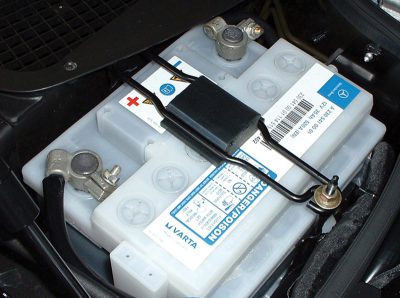
Tracking down mysterious current draws that gradually drain batteries seems as if it should be simple, but it rarely is. More often, tracing them can require a substantial amount of detective work. That’s the tough part. Once you’ve identified the source of a key-off current draw, the repair is usually simple.
Start at the beginning
Before you start digging into wiring schematics and fuse boxes, it’s best to get detailed information from the customer as to the exact symptoms he or she is experiencing.
What makes the customer think there’s an unwanted current draw? The answer is normally a battery that goes dead after some period of time, but query in detail; don’t let the customer perform the diagnosis for you. Today’s Mercedes-Benz vehicles carry advanced electronic systems, and some symptoms that were pertinent decades ago, which your patron may have heard from an aging relative, no longer apply.
Get specifics from the customer. Exactly what circumstances precede or precipitate the problem, presumably a dead battery? How long does the vehicle have to sit before the battery goes dead? Does the problem appear after a long drive? After a short drive? After the car’s been sitting for a week? Does the problem only occur in warm weather? Cold weather? After a teen-age son or daughter has driven the car? Any recent collision repairs?
Determine if any service was performed just before the problem developed. Battery, alternator, or starter replacement? Installation of any aftermarket products like sound or anti-theft systems? Any other electrical system-related service? Have any fuses blown lately or repeatedly?
Are there any other electrical system problems or issues? Are headlights or any other lights dim or even flashing? Turn signals slow? Windshield wipers slow? Any driveability issues?
Mercedes-Benz has produced a detailed “Current Draw Customer Questionnaire,†which should be filled out with the customer, not by the customer. See your local Mercedes-Benz Dealer Parts Department for a copy.
Look first for the obvious
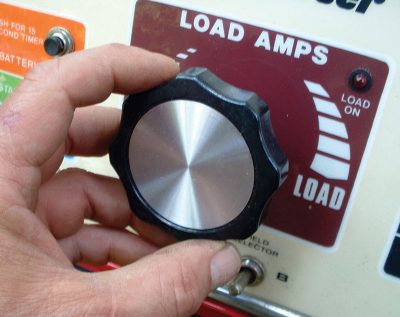
Certainly, you want to start your diagnosis with the most obvious steps. Check the condition of the battery posts and cable clamps, the main chassis and engine grounds, the state of charge by voltage, then test capacity either with an electronic impedance tester, or even an old-fashioned VAT with its carbon-pile load (in fact, many techs still prefer the latter). You may have to give the battery an external charge if it has been run down.
If you’re not completely satisfied with the battery’s basic health and the cells have removeable caps, you might want to do a traditional hydrometer check. At 80 deg. F., a reading of 1.260 1.270 (subtract .004 for every 10 deg. below 80) corresponds to the proportions that constitute a full charge — 24% acid by volume, 35% by weight. If the float only rises to, say, 1.120, enough acid has turned to water to render the battery deceased for all practical purposes. Charge it and try again. If any cell reads .050 less than the others, and doesn’t shape up after another blast on the charger, replacement is the only remedy. By the way, hydrometer testing isn’t accurate immediately after adding water, if there’s been a recent heavy discharge, or during charging.
Make sure the charging system raises the voltage sufficiently when the engine is started (13.8 to 14.2V depending upon temperature) to assure that the battery is being properly replenished. Look to see if there are any stored DTCs that would point to a particular problem area. And use your sense of hearing as well. Listen carefully under various circumstances for the possible sound of a relay clicking, which might well point to the source of the problem.
Next, you should check to be sure there actually is a parasitic power draw beyond what’s normal with the key off, and after the vehicle has been sitting unmolested for a reasonable time. Depending on the year and model, normal draw will range from 30mA or less all the way up to 100 mA (CAN asleep). You can use a digital multi-meter (DMM) to measure a parasitic current drain, which Mercedes-Benz refers to as “quiescent†current draw.
Traditionally, this was done by inserting your DMM’s leads in series between the battery’s negative post and the negative battery cable.
But there’s a catch in modern vehicles. You must complete this procedure without breaking the electrical connection between the battery post and cable. If you accidentally or intentionally break the circuit when removing the terminal from the battery, it’s possible that, when you re-make the connection via your DMM, one or more modules may “wake up†and re-enter an initialization process. This might blow the fuse in your DMM, and would also create a current draw that would complicate your measurement and tracing of a true, abnormal parasitic loss, which would be masked by the current draw of the module.
If you do inadvertently break the circuit during this process, you’ll have to postpone further testing until the module completes its initialization cycle and goes back to sleep. Or, if your scan tool has the capability, you can command the module to go to sleep quickly.
As such, you need to be careful to establish a shunt circuit with a jumper wire when connecting your DMM in series with the negative battery cable and terminal. You also want to implement this procedure with as many electrical devices turned off as is possible. So, for instance, you want to complete this step with doors closed so that courtesy lights are off.
Mercedes-Benz service training suggests that you avoid that extra effort by simply connecting your DMM in series between the negative battery post and a good chassis ground so no disconnection is necessary.
With your DMM now duly connected, you can determine the actual amount of current draw in milliamps, or —heaven forbid — amps. The amount of current flowing with everything off will help you determine likely sources of the parasitic power draw. It will be helpful to know the amperage draw immediately after the ignition is turned off, and how long it takes for all of the circuits to resume slumber. Bear in mind that if the current draw drops after some period of time, it may be necessary to switch the measurement range of your DMM in order to get accurate readings if it is not auto-ranging.
The amount of current draw can help point you toward the source of the power loss. Look to assure that, on vehicles without the Keyless Go feature, the ignition key is removed, all devices are unplugged from any power outlets, and the doors, hood and trunk are open with their switches defeated so the car thinks they are all closed. This allows you to poke around without opening something and waking the vehicle.
Note too, that your 12V incandescent test light is a tool that should be reserved for older vehicles with far less sophisticated electrical systems. The electrical components and circuits in late-model Mercedes-Benz vehicles can, in many cases, draw far less current than it takes to visibly illuminate a simple 12 volt test light (although the LED type will work fine). You may be searching for a much more subtle parasitic draw. So leave that antiquated test light in the tool box and stick with your DMM and scan tool for this job.
Of course, if you’ve invested in the ingenious XENTRY diagnostic system, or you have an aftermarket substitute, you can follow the on-screen menus and directions to investigate parasitic draw. For example, you can look into “bus keepawake unit monitoring in the electronic ignition switch,†and you might find an unusually-long waking period for the body CAN.
Also, you can and should access data from the Intelligent Battery Sensor (IBS) for clues that will help guide you to the source of the current draw. But bear in mind that the IBS system, which monitors the battery’s condition about four times a minute when the vehicle is “sleeping,†will not necessarily point you directly to a faulty component.
Choose the fuse

The fuse box is your friend, but not for the reasons technicians have traditionally believed. While pulling fuses and watching for the current draw to disappear worked well for the cars of yesteryear, that procedure will not help you given the advanced electronics of today’s Mercedes-Benz vehicles. Doing so will only confuse the modules, circuits, relays, and the CAN itself, all of which operate off of battery power.
But don’t despair. The fuse box really can be your friend in tracking down parasitic current draws. It’s just that you have to avail yourself of that friendship in a different way. Start by assuring that all CAN bus networks are inactive and all fuse boxes are readily accessible. You’ll need your DMM, an amp clamp, and test leads/probes. The key in this process is to track the current path of the parasitic drain from the battery to the device that’s drawing current without disturbing any electrical circuits in the vehicle. That’s why pulling fuses is not a suitable process for modern times .
Rather, what you want to do is track the parasitic (quiescent) current draw from the battery to the guilty device. You can start by using your amp clamp on the battery negative/ground cable. As a general rule on Mercedes-Benz vehicles, you should observe current draw of less than 100mA after one hour, although this spec may vary from model to model.
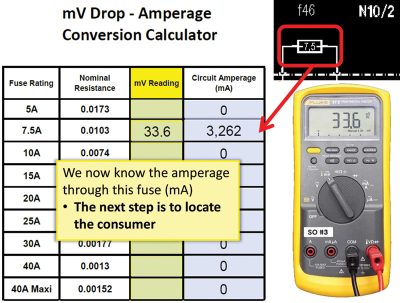
Compare the spec against the actual reading in milliamps; the difference is the unwanted, abnormal parasitic current draw.
Next, proceed to the pre-fuse box if it is accessible, and, using your amp clamp, measure the current from each output in search of a draw that matches your calculations from above. If you find a circuit whose amperage draw closely matches that which you calculated, then you have likely found the faulty circuit.
Now to the fuse box itself. Do not pull fuses, but rather use your DMM to measure voltage drop across each fuse using the narrow pointed probes you set aside earlier. Circuits with no current draw should show zero voltage drop across the fuse, since no current is flowing. A circuit that is drawing current will show a tiny, but measurable voltage drop in millivolts across the fuse, reflecting the fact that the circuit being protected by that particular fuse is powering something, normal or abnormal.

Note that the resistance and voltage drop across fuses will vary with the amperage rating of the fuses, and that you’re dealing with very small units of measure when detecting millivolts, so you will need a highly accurate professional-quality DMM for these measurements.

Once current draw (in millivolts) is measured across one of the fuses, use an appropriate chart to convert the mV reading to milliamps (mA). This will identify the exact amount of parasitic current draw. At this point, the detective work becomes much easier, as you now know which circuit is responsible for the draw, and the amount of the draw. Now, the much simpler task is to identify the component protected by that fuse that is responsible for the current draw and correct the problem.
A given fuse typically protects several circuits, so you can use your amp clamp to probe each of the circuits protected by that fuse.
At this point you can replace the faulty relay and road test the vehicle to confirm that the excessive quiescent current draw has been eliminated. Of course, the procedure is similar if your diagnostics point to some other potentially faulty component. Once you identify and correct the fault, you’ll certainly want to perform a road test, current draw test, and perhaps an overnight test as well in order to confirm that you have indeed found and corrected the fault.Â


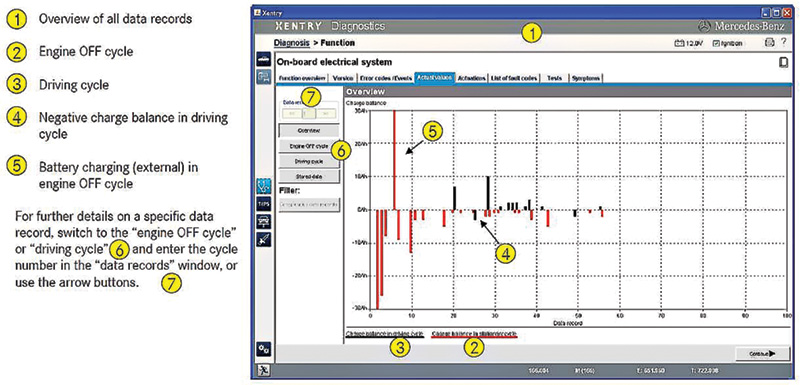
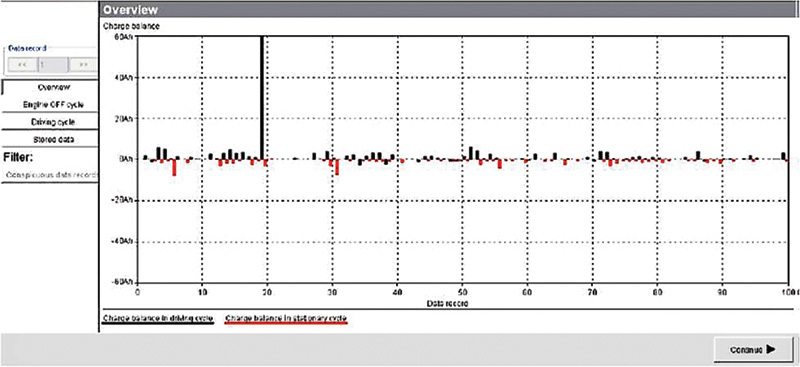




0 Comments